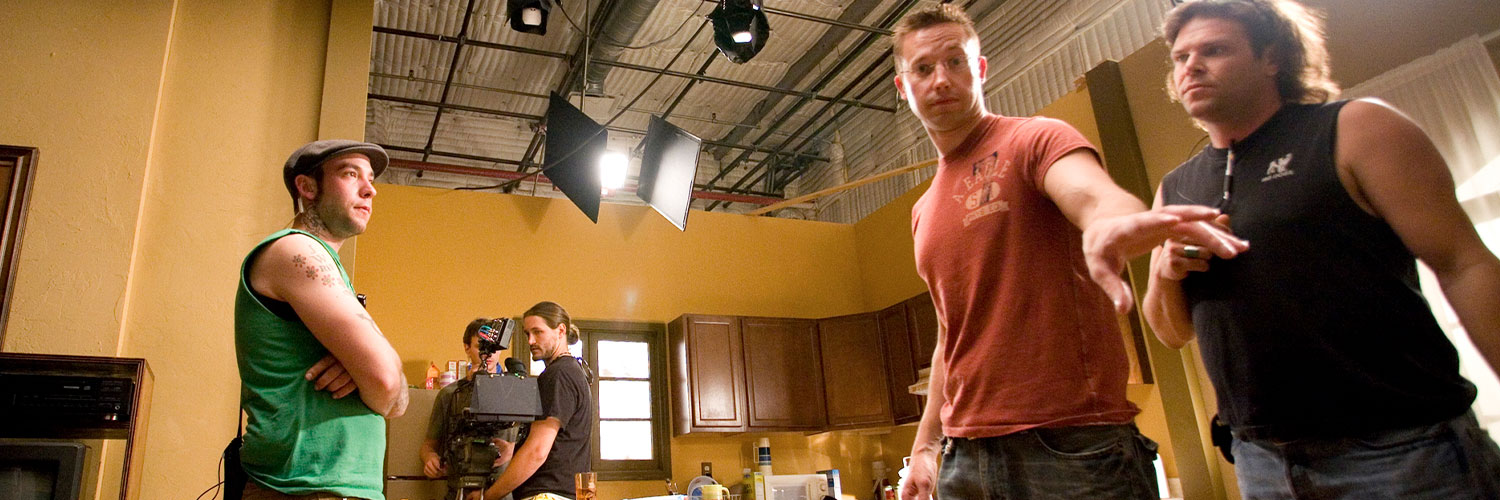You want to attract more
Big-Budget
Productions
But is your workforce ready?
Introducing FilmSkills Training
A complete platform and online training curriculum to enhance your workforce
You have a difficult responsibility– to attract big budget productions, create more local jobs, and show the public that your tax incentive is worth the cost. But you are competing against other states with aggressive incentives and an even more qualified crew base.
That’s why we’ve partnered with over 70 Academy Award and Emmy-winning filmmakers and companies to enhance your outreach with an LA-produced training program designed to teach your local workforce industry standards and best practices for television and motion picture production.
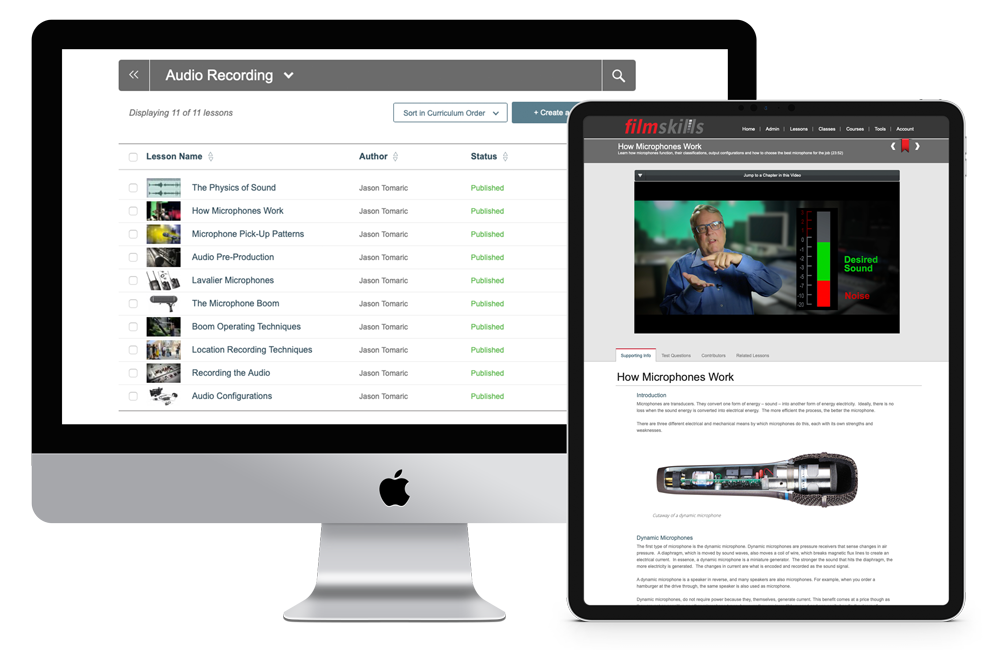
Pre-Built Certification Courses
Taught by Academy Award and Emmy winning filmmakers, our pre-built courses include a complete training curriculum
White Labeled Platform
Increase the value of your training by branding your online academy with your own logos and images
Generate Revenue
Mark up each course price to earn profit with integrated credit card processing and revenue management
Produced in partnership with


12 Pre-Built Online Certification Courses
Fully customizable, expertly-produced online courses are included in your account to help you prepare aspiring professionals for a career in film production
- Completely Online
- 3 months duration - students learn at their own pace
- Engaging on-set video tutorials
- Includes quizzes to test your students' knowledge
- Customizable marketing pages
- Downloadable examples, files, and contracts
- Learn from Oscar and Emmy winning filmmakers
- Earn a personalized certificate
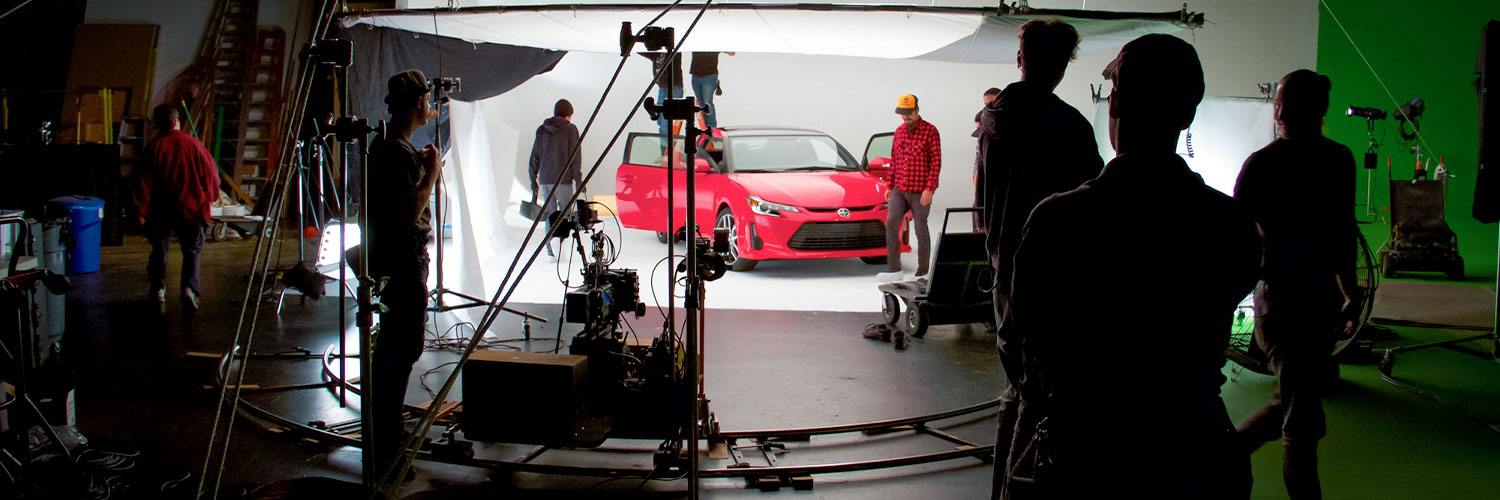
Getting Started in the Film Industry – An Introductory Course
You are about to step into one of the most fulfilling industries in the world; an industry where hundreds of people work together to realize a singular vision; an industry where unlimited creativity and advanced technologies intersect; an industry that strives to manufacture moments that evoke an emotion on screen. But to achieve these results, the film industry is one of long hours, hard work, and lots of magic.
The film industry is also one of the most secretive, and one of the few that spends millions of dollars to create the illusion of wealth, fame, and luxury. But the reality is much different from the public’s perception. Sporadic work hours, long days on set, and hard physical work are only part of the challenges professionals face in this freelance industry. Knowing what you’re getting into is the first step in starting your career, which is why we created this course.
Unlike other industries where you can shadow professionals to assess the viability of each career path, it’s nearly impossible to shadow directors, producers, cinematographers, and writers. That’s why we’ve partnered with leading Hollywood filmmakers who share the knowledge, career tips, technical skills, and professional techniques they’ve used to create the movies and TV shows that entertain hundreds of millions of people.
In the Getting Started in the Film Industry – An Introductory Course you will learn:
- How the industry works, from an insider’s perspective
- How to effectively network to grow your career
- The realities of working freelance and what to expect
- How to find your first job
- How to (potentially) move to Los Angeles
- How to make money and a living as a filmmaker
- Proper on-set etiquette
- What to wear and what to bring to set
- A day on a movie set
- How to properly use walkie-talkies
- How to deal with difficult personalities
This introductory course is taught by dozens of professional filmmakers, who have collective won or been nominated for 72 Academy Awards, Emmy Awards, BAFTAs, and Golden Globes. They represent nearly every department including directors, producers, cinematographers, editors, production designers, script supervisors, gaffers, grips, composers, and many, many more.
Once you complete this course, you have the foundation knowledge to explore other courses, each of which focus on a specialty within the film industry.
Learn the career skills necessary to succeed in the film industry.
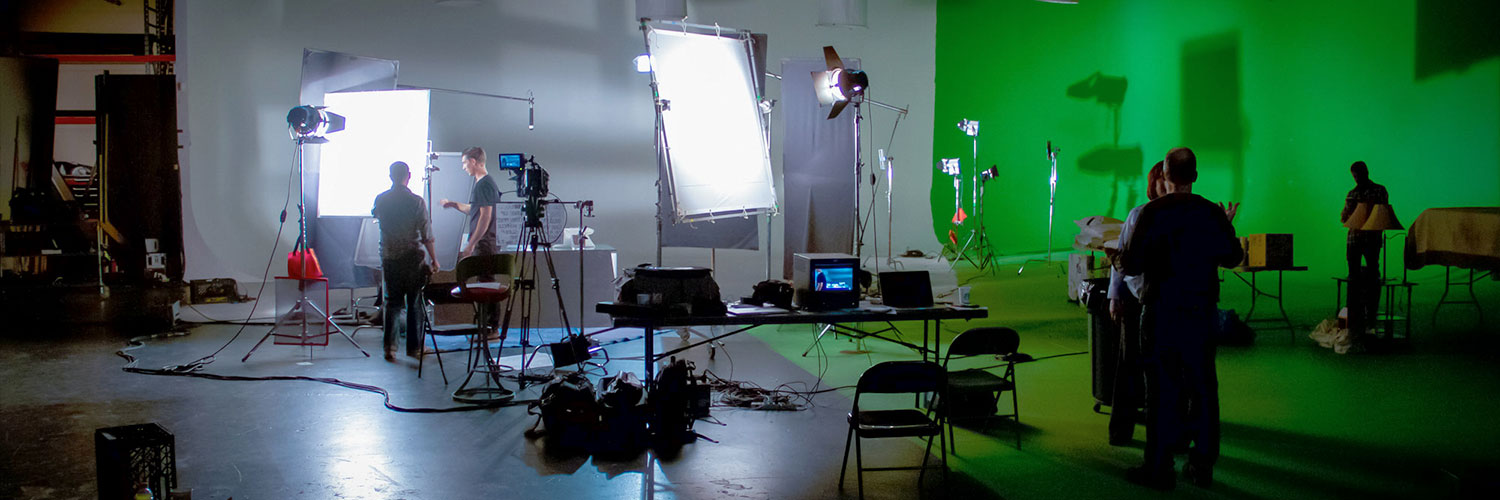
On Set Safety Certification Course
As filmmakers, it’s easy to feel we are impervious to injury and even death; that somehow, the protective bubble of both the filmmaking process insulates us from accidents. Unfortunately, in the real world, we know the laws of physics – gravity, electricity, momentum – apply to everyone; as does the unstoppable force of our legal system. Tragically, dozens of filmmakers have been injured or killed on set in recent years, and in virtually every case, these accidents could have been prevented.
In the interest of protecting you from injury and liability, we created an extensive safety training program that mirrors the training administered to working union entertainment-industry professionals in California.
The Film Production Safety Training Course seeks to training crew persons in current safety standards to reduce the risk of accidents, injury, or death on set. The Film Production Safety Training Course adapts the Industry standard California OSHA and Contract Services Safety Pass program for student, independent, non-union, and union crew persons. This program is modeled after the very same program required of all IATSE crews working on studio and network television shows in California. Improve the safety on set, reduce the risk of accidents, and protect yourself from liability with the Film Production Safety Training Course.
This course includes 14 lessons, which cover:
Safety is an Attitude
This lesson covers individual crew member responsibility towards safety, how human factors contribute to accidents and how they can be prevented. Learn actions on how to create a safe environment on set.
On Set Practices
Learn to conduct safety meetings, proper clothing, drug and alcohol policies, safety bulletins, and how to maintain an organized set. Learn the fundamental principles of creating a working safe environment.
Studio Facilities Safety
Learn how to maintain a safe environment when working on a sound stage – from maintaining fire lanes and working from a height, to working with combustible materials and maintaining a safety protocol.
Location Safety
Learn how to assess the hazards of a location – from environmental to animal hazards. We discuss how to work safely alone, how to safely work on rooftops, around the public, and how to make a location safe for production personnel.
Electrical Safety I
Learn how electricity and circuits work, about proper grounding and polarity, and how little electricity is needed to electrocute an adult. This lesson reveals how to map the circuits in a location and calculate safe loads, and what happens when power demands exceed the internal wiring of a structure.
Electrical Safety II
Working around high voltage wires can, and has been, deadly. In this lesson, learn proper guidelines for working around high voltage power sources, how to spot faulty equipment and correctly use cords and outlets, including in high-traffic areas. Learn about the risks, and effects of electric shocks, electrocution, electric fires and how to prevent them. In addition to preventative measures, this lesson covers emergency medical procedures in the event of shock or electrocution.
Lighting Equipment Safety
From high-output lights and dimmer boards, to HMIs and working with light stands, this lesson covers the hazards and safe practices of working with lights and electrical equipment.
Vehicle and Roadway Safety
This lesson teaches you proper safety protocol for working around public roadways, when the road is used in the scene, or the crew is shooting near a roadway.
Shooting in Moving Vehicles
Learn proper safety procedures when shooting driving scenes on a public street – from the poor-man’s process to process trailers, this lesson covers every aspect of what to do and what not to do.
Grip and Rigging Safety
Learn proper rigging safety techniques – from hanging overhead lights and properly securing a 12×12 in a breeze, to proper knots, securing stands, and ensuring all rigs are safe on set.
Vehicles, Lifts, and Tools
Learn the safety procedures for working with hand power tools, ladder and scaffold safety, the safe operation of truck lift gates and aerial lifts, and how to work around production vehicles.
Weapons and Props
A dangerous and frequent problem on set is the improper use of prop weapons, which can be illegal and deadly. In this lesson, learn how to properly use weapons (and prop weapons) on camera, from handling procedures, to employing a qualified armorer, to dealing with the public and working with local officials.
Pyrotechnics and Special Effects
This lesson explores the proper and safe procedures for working with squibs, explosives, fire, smoke and fog, and other types of atmospheric effects. Learn the dangers of working with pyrotechnics, the proper permitting process and how to hire an experienced, trained pyrotechnician.
Environmental Safety
Learn how to recognize, prepare for, and work in various environmental situations – from shooting in extreme heat to extreme cold, to working around water and in locations where there may be health hazards. Learn how to recognize and react to symptoms of heat stroke and frost bite, unstable structures and locations with airborne contaminants.

Professional Screenwriting Course
A great movie is made from a great script. No matter how big the budget, how engaging the performances, or how spectacular the visual effects, a poorly-written script erodes the foundation of the movie before you even start to shoot it.
In the Professional Screenwriting Course, you will learn the step-by-step process of writing a script from top Hollywood writers. From the very beginning stages of developing a marketable idea, creating dynamic characters, understanding story structure, and finally learning how to market your script. You will gain all the tools you need to write a professional Hollywood screenplay.
In this 25-lesson course, working Hollywood screenwriters methodically guide you though the screenwriting process from developing an idea through optioning your screenplay to an agent. This course is organized into three sections:
Section 1: Story Structure – this series of lessons focuses on how to build and structure the story, manage sub plots, and how to address story pacing issues. The lessons include:
- Beginning the Writing Process
- Working with a Writing Partner
- Finding Story Ideas and Inspiration
- Developing a Marketable Idea
- Story Formats
- The 7 Plot Types
- The Implications of Genre
- The Three Act Structure
- A-Story and Subplots
- Techniques to Improve Story Pacing
- Techniques to Engage the Audience
Section 2: Character Development – this series of lessons guides you through the process of creating believable characters, developing strong backstories, and writing convincing dialogue. The lessons include:
- Creating the Protagonist
- Creating the Antagonist
- Conflict Types
- How to Write Memorable Supporting Characters
- Understanding Character Archetypes
- Designing Personality and Building Backstory
- How to Write Natural Dialogue
Section 3: The writing process – In this section, learn how to approach the writing process, from outline to rewrites. The lessons include:
- Title, Theme, and Log Lines
- How to Write a Treatment and Outline
- How to Format a Screenplay
- How to Write the First Draft
- Techniques for Rewriting and Refining Your Script
- How to Market Your Script to Producers and Agents
- Your Screenplay and the Real World
You will learn from Emmy and Oscar-winning filmmakers as they reveal the techniques they’ve learned throughout their careers. Your instructors include:
STEVE SKROVAN
Emmy-Winning Executive Producer
Two-time Emmy winner, Steve is the Executive Producer on “Everybody Loves Raymond,” “Hot in Cleveland,” “‘Til Death,” and “School of Rock,” and produced the Sundance Grand Jury Prize nominee, “An Unreasonable Man.”
GUY GALLO
Screenwriter
Guy has penned the screenplays for “Under the Volcano,” “American Playhouse,” and “Takes from the Darkside”
NEIL LANDAU
Screenwriter
Neil has penned screenplays for “Don’t Tell Mom the Babysitter’s Dead,” Melrose Place,” Doogie Howser, M.D.” “Tad: The Explorer,””The Magnificent Seven,” and “Undressed”
KEN DANCYGER
Screenwriter
Ken Dancyger is the author or co-author of seven books on screenwriting, directing, film editing and production. Ken is past Chair of Undergraduate Film and Television, TISCH School of the Arts, New York University, where he is a Full Professor.
CHRIS HUNTLEY
Academy Award Winner
Chris Huntley won the Academy Award for his groundbreaking story structure software DRAMATICA.
EDWARD RICOURT
Screenwriter
Edward has received screenwriting credit for “Now You See Me,” “Jessica Jones,” “Now You See Me 2,” and “Wayward Pines”
JENN CARROLL
Script Coordinator
Jenn’s credits include, “Breaking Bad,” “Just Call Saul,” “Men of a Certain Age,” “Childrens Hospital,” and “General Hospital”
_______________________________________________________
CHECK OUT A FREE PREVIEW LESSON FROM THIS COURSE: https://youtu.be/0tr4Hjem8i4
Professional Film Directing Course
As a director, you are the master storyteller, tasked with interpreting the script into a visually entertaining story that can be produced within the time and budgetary restrictions of the production.
From working with the actors to achieve the desired performance to planning the shots and flow of each scene, the director’s artistic vision touches every aspect of the filmmaking process. The thousands of decisions the director makes can each influence the quality of the final product, and understanding how the production process works is key to making the right choices.
In the Film Directing Certification Course, you will learn from over a dozen internationally recognized TV and film directors who methodically guide you through every step of the directing process. From working with actors to managing the set, this insider’s look at the process will help you optimize the pre-production process, analyze the characters, improving your communication on set, and interact with the crew in a way that guarantees your vision makes it from your mind to the screen.
This self-guided online course connects you to successful television and feature film directors, each of whom share the knowledge, experiences, and techniques with you.
- Break down a script and analyze characters
- How to develop a visual story and theme for your production
- Design and implement storyboards and pre-visualization techniques
- Find and attract qualified, convincing actors
- Conduct an effective audition to find the right actor for each role
- Warning signs to look out for in potential actors
- How to work with a casting agency
- Techniques for breaking down the script
- How to interface with each department and effectively convey your vision
- What to do 30 seconds before calling “Action”
- What to do right after calling “Cut”
- Properly block, light, rehearse, tweak, and shoot a scene no matter how large your crew
- On-set tutorial for directing a scene
- Create an effective, fool-proof shot list
- Advanced techniques for blocking natural, convincing performances
- Determine the proper coverage for each camera angle
- Track continuity for seamless editing
- Plot character arcs and motivations
- Techniques to conduct effective rehearsals
- Properly direct and communicate with actors
- Balance performance with the cinematic look of the frame
- How to direct extras to create convincing background action appropriate the world of your story
In this self-guided online course, top television and feature film directors reveal the techniques, experiences, and advice they’ve learned after decades open set. Your instructors include:
ROB BOWMAN
Director, Executive Producer
Rob directed “The X-Files” movie, numerous episodes of “Star Trek: The Next Generation,” and was the Executive Producer of ABC’s hit drama, “Castle.”
BETHANY ROONEY
Director
Director of over 150 episodes of prime-time network shows, including “Grey’s Anatomy,” “Desperate Housewives,” “Brothers and Sisters,” and “Private Practice.” For cable television, she has directed In “Plain Sight,” “Weeds,” and “Drop Dead Diva.”
MARY LOU BELLI
Emmy-Winning Director
Two-time Emmy winning director, Mary Lou has helmed episodes for dozens of prime time shows, including “NCIS: New Orleans,” “The Quad,” “Hart of Dixie,” “The Game,” “Monk,” and “The Hughleys.”
ANDREW DAVIS
Director
Andy is best known for directing Harrison Ford in the Oscar nominated, “The Fugitive.” He has also directed numerous feature FilmSkills, including “Under Siege,” “Above the Law” (both starring Steven Segal), “Code of Silence,” “Holes,” “The Package” and “The Guardian.”
RANDAL KLEISER
Director
Randal Kleiser’s first feature “Grease” is the most successful movie musical ever made. Other credits include “The Blue Lagoon,” “The Boy in the Plastic Bubble,” “Summer Lovers,” “Flight of the Navigator,” “White Fang,” “North Shore,” “Getting It Right,” “Lovewrecked” and “It’s My Party.”
ANTHONY RAY PARKER
Actor, “The Matrix”
Anthony is an American actor best know for his role as Dozer in “The Matrix.” His other credits include, “Spartacus,” “The Marine,” “The Frighteners,” and “The Resolve.”
STEVE ZUCKERMAN
Director
Steve has directed hundreds of hours of prime time television shows, including, “Friends,” “Empty Nest,” “Men at Work,” “Melissa & Joey,” “According to Jim,” “Love, Inc.” and “What I Like About You”
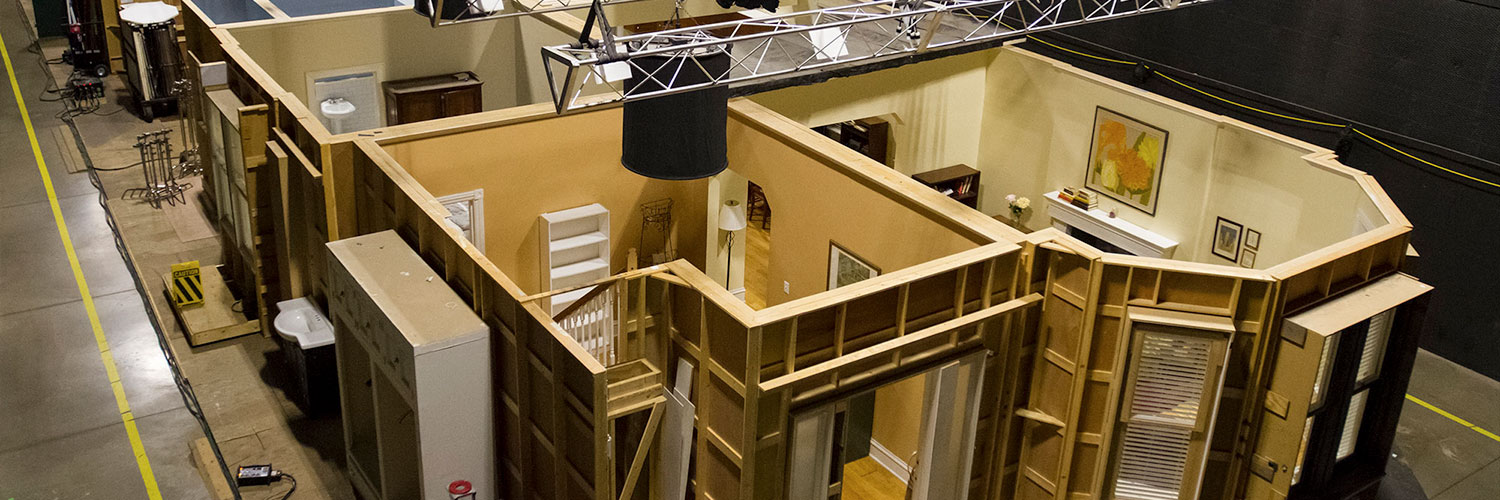
Art Department Certification Course
The art department on a movie or tv show is responsible for creating the world in which the story takes place. From designing and building the sets to constructing props, the art department is one of the largest, most scalable departments on set.
Headed by the production designer and managed by the art director, the art department interprets the director’s vision into the story world, whether that’s a Texas farm from the 1800s, the slick penthouse of a modern-day billionaire, or the rich fantasy world. Regardless of the genre, constructing this world is a delicate balance of developing the characters through the set design and creating a set that meets the technical demands of the production, all while managing the pressure of delivering on time and on budget.
In the Art Department Certification Course, you will learn the hierarchy of the art department, skills to create the story world, and tips to pursue a career in the art department. This course, taught by working Hollywood filmmakers, covers:
- The hierarchy of the art department on a feature film or television show
- How to break down the script
- How to define character traits through the production design
- How to design a convincing movie set
- Set construction techniques
- How to dress a set to make it look realistic
- How to build flats
- How to define, assemble, and build props
- How to determine the art department budget
- The role of the construction coordinator and the construction department
- How set design differed from commercial and residential construction
We’ve partnered with talented, Emmy-nominated set designers, production designers, set dressers, construction coordinators, and prop makers to teach you the foundation skills to succeed in the art department.
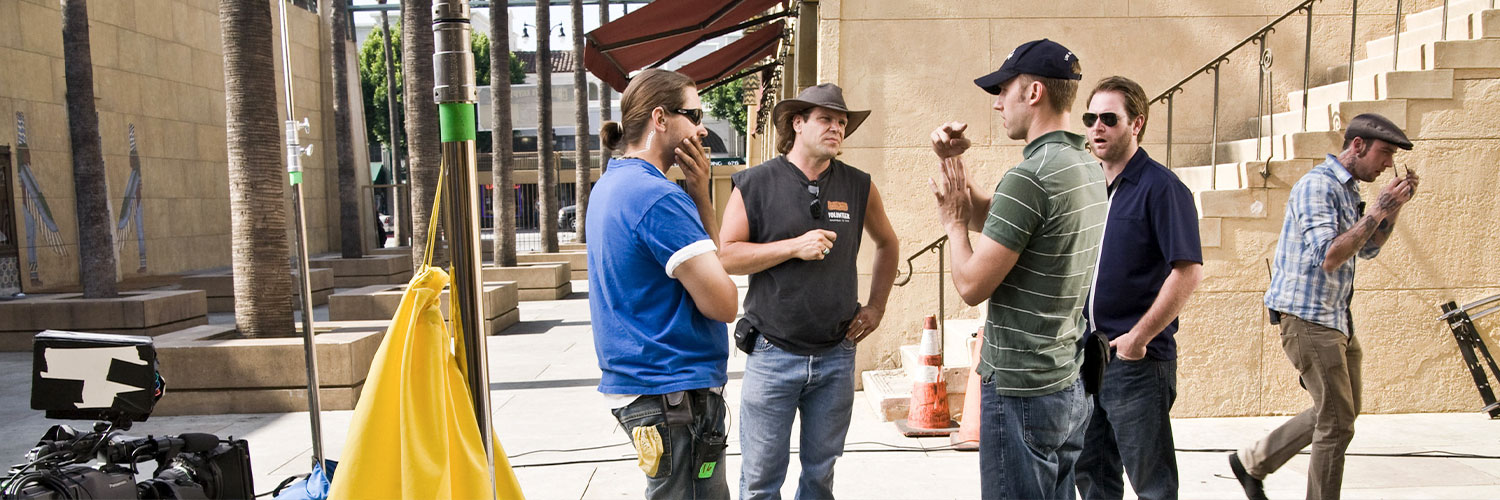
Assistant Director Certification Course
The first assistant director (or 1st AD) is a member of the assistant director department, also referred to as the production department. The assistant directors manage the day-to-day operations of the set, ensuring each department, crew person, and actor are where they need to be for filming to continue.
If the producers are tasked with getting all the people, equipment, and resources to the set, it’s the assistant directors who manage them on set, always ensuring each production day wraps on time and within budget. From planning the shooting schedule to coordinating with each department, the assistant directors are a vital team to efficiency on a movie set.
While this course covers the duties and responsibilities of the assistant directors, it starts with the role of a production assistant, an entry-level position that will give you access to nearly every department on a film set. It’s the gateway into a film industry career and a notable rite of passage that almost everyone has taken. This course will teach you how to become a production assistant, and most importantly, how to succeed as one.
In this self-guided online course, you will learn the duties and responsibilities of the assistant director department, including:
- The roles of each member of the assistant director department
- How to properly break down a script
- How to develop a shooting schedule
- How factors such as turnaround time, pushed calls, meal breaks, and union guidelines affect the schedule
- How to effectively manage the set
- How to interface with each department on set
- How to complete on-set paperwork and reports
- How a scene is shot – from the initial blocking to the tie the camera rolls
- How to direct extras
- The role and expectations of a production assistant
- How to break in as a production assistant
This course is taught by the assistant director team from Titanic, Avatar, Real Steel, Night at the Museum, Stranger Things, Logan, and dozens of blockbuster Hollywood movies ad TV shows. You will learn from the very professionals who may hire you in the future, making their insights valuable and relevant.
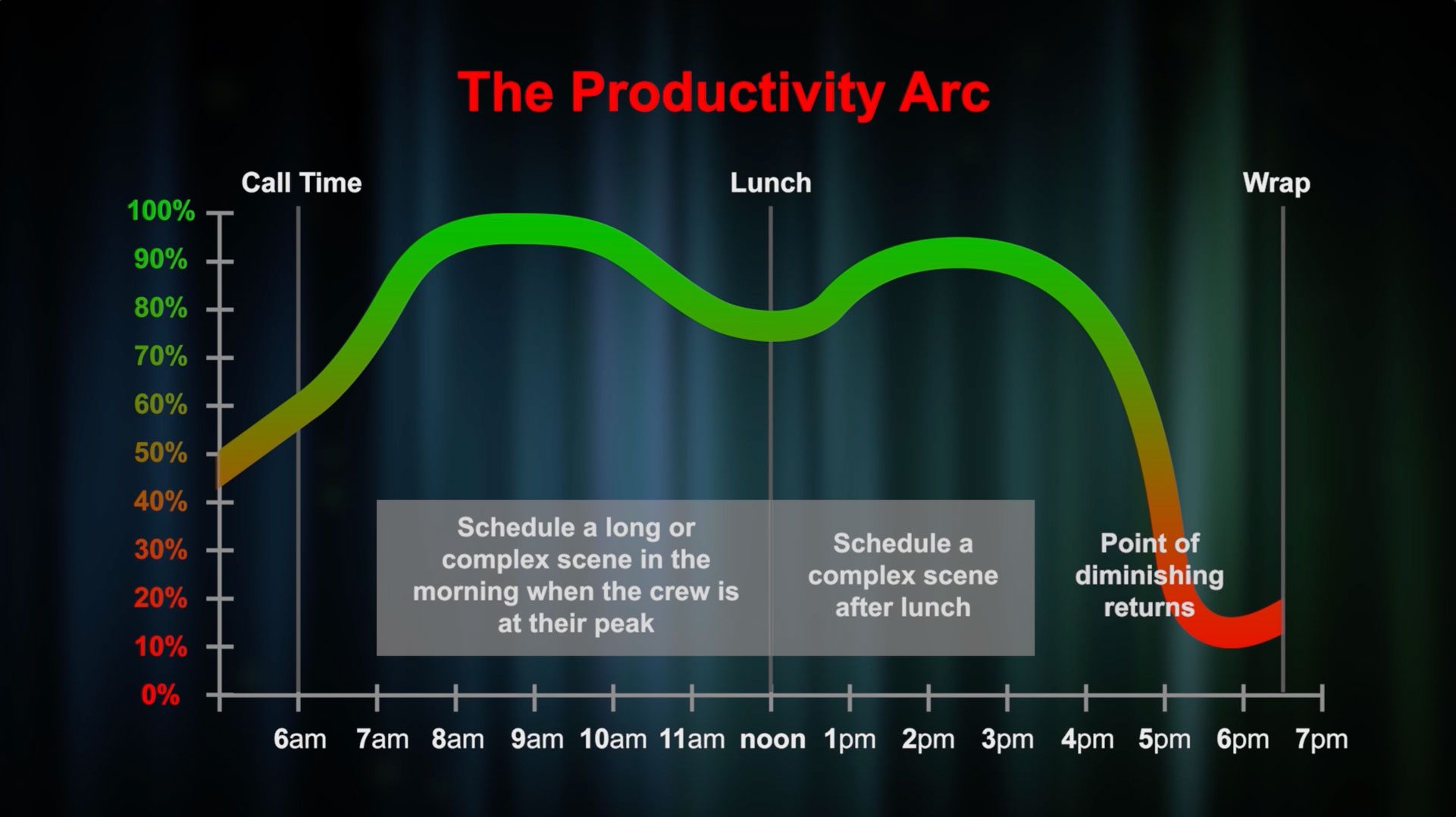
Your instructors include:
Josh McLaglen
Josh is the producer of “Avatar,” the X-Men movies, “Logan,” “Real Steel,” and, as James Cameron’s 1st AD, ran the sets of “Titanic,” “Avatar,” and dozens of other Hollywood blockbusters.
Jody Brockway
Eve Light Honthaner
Maria Battle-Campbell
Mike Musteric
Johanna Jensen
“Law & Order,” “Adventures of Brisco County Jr.,” “Northern Exposure”
Stephen Marinaccio
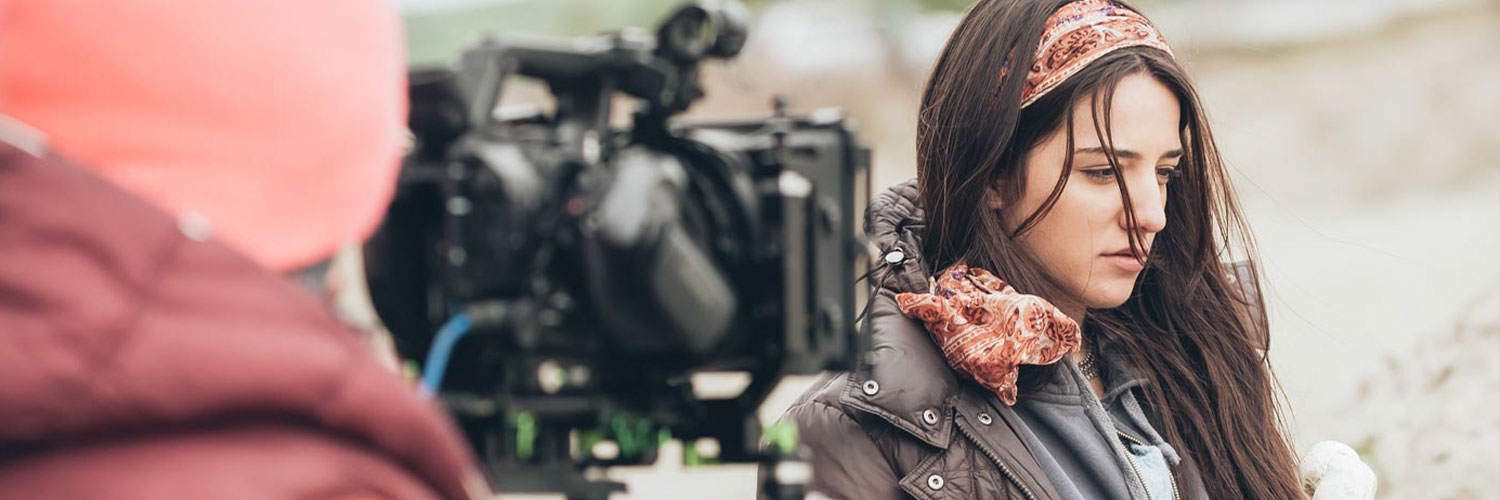
Camera Department Certification Course
The camera is the window that connects the audience to the world of the story, creating an emotional tone through the technical settings of focus, exposure, shutter speeds, lens choice, and camera movement. The camera crew on a television or feature film set is responsible for building, moving, and operating the camera, translating the cinematographer’s vision into the movie frame. In this course, you will learn the fundamental skills needed to break into the camera department, including:
- The duties and responsibilities of each member of the camera department
- The components of a professional Cine camera
- How to build and test a professional camera package
- How to test a lens
- How to prep a camera for a walkaway
- The types of tripods and sliders
- How the imaging sensor and ISO work
- Frame rates, and how they affect the image
- How to expose a shot
- f-stops and T-stops
- How to work with neutral density filters
- How to work with polarizers
- How to set and maintain focus
- Lens focal length
- How to work with the depth of field
- Considerations when moving the camera
- How to mark actors
- How to prepare camera logs
- How to manage media
Your instructors in this course are veteran Hollywood filmmakers, and include:
DAVID STUMP, ASC
Academy Award Winning Cinematographer
As an Academy-Award winning cinematographer and two-time Emmy nominee, David has worked on “American Gods,” “Breaking Bad,” “X-Men,” Hollow Man,” and is the technical chair of the ASC.
BLAIN BROWN
Cinematographer, Author,
“Cinematography: Theory and Practice” and “Motion Picture and Video Lighting”
RICK TAYLOR
Camera Operator,
“Don Jon”, “The Price of Happiness”, “Timecode”, “Perfect Game”, “Team Knight Rider”, “Ghostbusters” and “He-Man”
LAURA BETH LOVE
Cinematographer
Laura Beth’s credits include “Sharknado 3 & 4,” “Tabloid Vivant,” “If Looks Could Kill,” “Evil Nanny,” “The Horde,” and “Ark”
DREW LAUER
Camera Operator,
“Drive,” “SportScience,” “Smashlab,” “Known Universe”
HARRY C. BOX
Camera Operator, Gaffer
Credits include “Heroes,” “Brothers and Sisters,” and “Everybody Hates Chris.” He has worked on major motion pictures, independent feature films, telefilms, documentaries, music videos, commercials, industrials, and has written “The Set Lighting Technician’s Handbook,”
LANCE FISHER, SOC
Camera Operator
Lance’s credits include “Paycheck,” “Godzilla,” “Blade: Trinity,” “Scream 3,” “Circle,” “Channel Zero,” “House,” “Las Vegas,” and “Jonas”
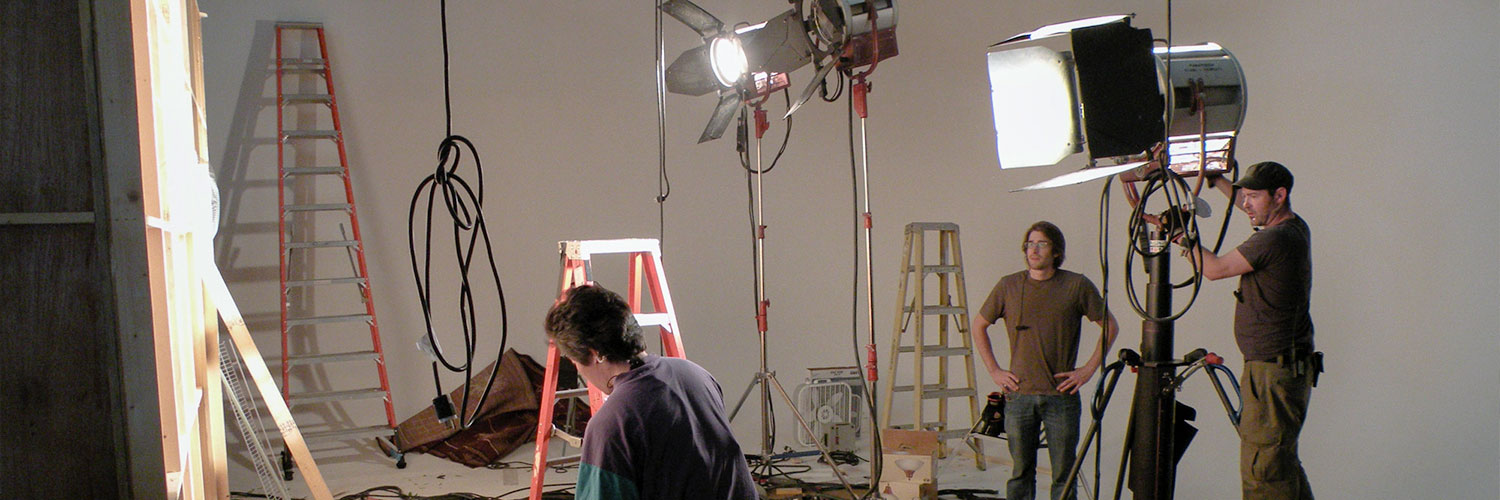
Electric Department Certification Course
The electric department on a television show or movie is responsible for setting up and creating light, running and managing power throughout the set, and coordinating rigging with the grip department. Run by the gaffer and reporting to the cinematographer, the electric department lights the actors and the set to invoke an emotional response in the audience.
In this comprehensive online course, Hollywood cinematographers, gaffers, and electricians guide you through the skills and techniques required to work in the electric department on a movie set. You will learn:
- The hierarchy of the electric department
- The duties and responsibilities of the gaffer, best boy electric, and electricians from the moment they receive a call for a job until the production wraps
- The various types of light fixtures, including Tungsten, HMI, fluorescent, and LED
- Professional lighting techniques on set
- How to work with lights of varying color temperatures
- How to light the human face
- Key light and advanced lighting techniques
- How to use lighting stands
- Lighting equipment safety
- Electrical safety training
We partnered with leading Hollywood companies and professionals to produce this course, including:
- Arri
- Kino-Flo
- LEDGO
- Matthews Studio Equipment
Your course instructors include:
David Stump, ASC Academy Award and Emmy-winning cinematographer,
“A Quantum of Solace”, “Flight Plan”, “Fantastic Four”, and “X-Men”
Dan Riffel, Gaffer
“Iron Man”, “G.I. Joe,” “Hancock,” “Spiderman 3,” “Mr. & Mrs. Smith” and “Charlie’s Angels
Blain Brown Cinematographer, Author, “Cinematography: Theory and Practice” and “Motion Picture and Video Lighting”
Harry C. Box Camera Operator,
“Heroes,” “Brothers and Sisters,” and Author of “The Set Lighting Technician’s Handbook”
John Gresch Vice President, ARRI Inc.’s Lighting Division
Ed Joyce, Gaffer
“Sea Rescue,” “Uncanny,” “Foursome,” “Making Movies”
Rick Taylor, Camera Department
“Ghostbusters,” “On the Lot”
Mike Uva, Key Grip, Author of “Uva’s Grip Book”
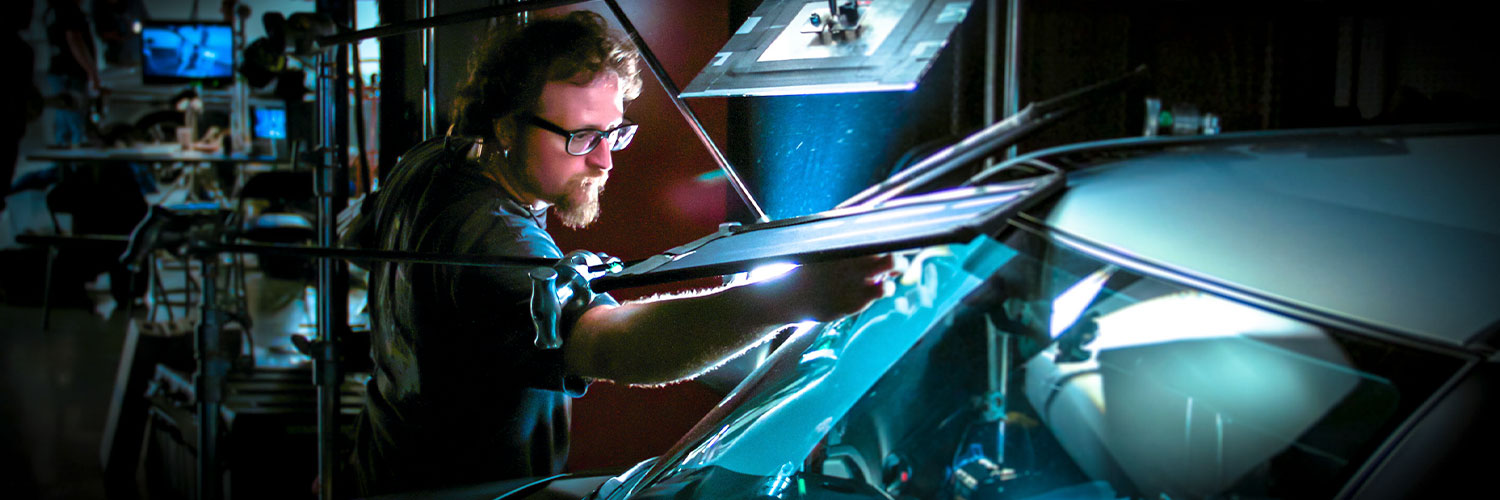
Grip Department Certification Course
Grips are the rigging masters on set, placing points and support for lighting instruments, building camera supports, shaping and cutting light, and working side by side with the electricians.
This course is for people interested in becoming a:
- Key Grip
- Best Boy
- Grip
- Dolly Grip
In the Professional Grip and Rigging Course, we partnered with leading Hollywood grips and manufacturers of the gear used on professional sets to teach you the skills and techniques to begin your career in the grip department.
You will learn:
- The roles and responsibilities of the key grip, the best boy, grips, and the dolly grip
- How to properly use C-Stands
- The types and uses of grip stands
- Clamps and rigging gear, and how to use them safely
- Grip support tools
- How to set up a goal post and menace arm
- Knots for on set rigging
- How to use scrims, nets, flags, silks, solids, and neutral density gels
- Proper set etiquette when choosing a light source and reducing it
- How to control the size of a light source
- Using Fresnels to craft the spread of light
- How to control wraparound
- How to work with diffusion on barn doors
- How to work with soft boxes and Chimeras
- How to skin a 4x4s
- How to work with 6×6 overheads
- How to control spill from soft light sources
- How to create internal vs external shadows
- Benefits and drawbacks of bard doors
- How to work with black wrap
- How to work with egg crates and louvres
- How to work with flags and solids
- How to create gobos
- How to create a cucoloris and brancholoris
- How to build a duvatyne skirt
- How to control the size of a light source
- How to control wraparound
- How to work with diffusion on barn doors
- How to work with soft boxes and Chimeras
- How to control spill from soft light sources
- How to set up dolly track
- How to operate a camera dolly
Your instructors in this course are experienced Hollywood filmmakers and include:
RICHARD MALL
Academy Award Winning Key Grip
Richard’s credits include “Ant-Man,” “Iron Man,” “GI:Joe,” “Hunger Games: Catching Fire,” “Twilight,” “xXx: State of the Union,” and “The Italian Job”
MIKE UVA
Key Grip, Dolly Grip, Author, “Uva’s Grip Book”
RON SILL
Gaffer, “Monsters,” “Rags to Riches,” “Iron Eagle”
ED JOYCE, Gaffer
“Sea Rescue,” “Uncanny,” “Foursome,” “Making Movies”
HARRY C. BOX, Camera Operator,
“Heroes,” “Brothers and Sisters,” and Author of “The Set Lighting Technician’s Handbook”
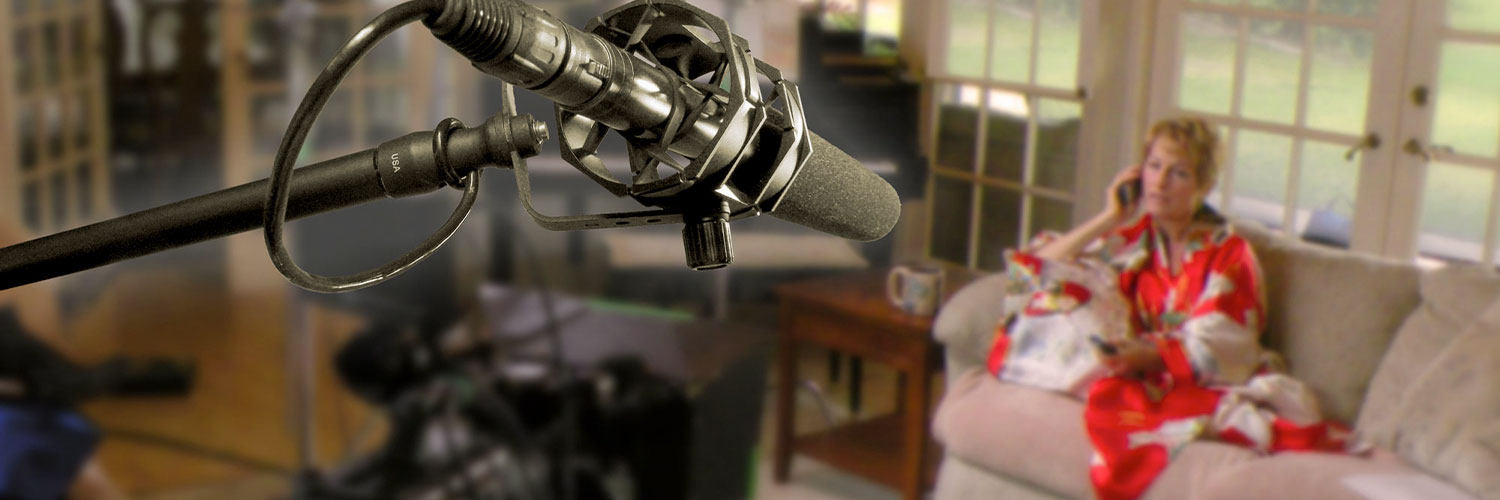
Audio Department Certification Course
In a motion pictures, the “picture” part is only half of the audience’s experience. The other half is the sound, and the quality of the sound recorded on set can mean the difference between a distracting, poor-quality audio that pulls the audience out of the moment, and an engaging visceral experience that draws the viewers into the world you are creating.
In the Audio Department Certification Course, you will learn the entire range of on-set audio recording techniques from master filmmakers, beginning with the physics of sound, how sound works, and why we hear what we hear.
- The physics of sound, and the attributes of the sound wave
- How microphone work and record sound
- How microphone pick-up patterns affect the recording
- Boom operating techniques for recording on set dialogue
- Audio recording techniques on location
- How audio is recorded, compressed, and processed
- How to prep a shoot
- How to address common on set challenges
- How to work with lavalier microphones
- How to work with shotgun microphones
- How to use EQ, compression, and limiters
The Audio Department Certification Course is taught by pioneers in the audio field, including the inventor of the THX surround sound system, and director of audio at Apple, Tomlison Holman. You will also learn from the leading educator of Audio Technia, the world’s leading manufacturer of microphones and audio recording equipment. Go on set with veteran production sound mixer Sara Evans, and gain practical experience from audiophiles Tommy Mack and Robert Magness.
Your instructors include:
STEVE SAVANYU
Director of Education, Audio-Technica
Steve is an accomplished recording engineer and the Director of Education at Audio-Technica, the world’s leading microphone manufacturer.
TOMLINSON HOLMAN
Academy Award Winner, Head of Audio, Apple
Tomlinson invented THX, and worked on the sound for “Return of the Jedi,” “Indiana Jones and the Temple of Doom,” and is currently the head of Audio at Apple.
SARA EVANS
Production Sound Mixer
“Grey’s Anatomy,” “Passengers,” “Westworld”

Producing Department Certification Course
Producing is the business of movie making, assembling the raw talent, equipment, and resources for the director to build their vision on the set. Producers constantly strive to balance the director’s artistic desire with the limitations of the shooting schedule and budget, addressing challenges on location, and juggling schedules of cast and crew. But challenges always arise, and it’s the producer’s nimble response that keeps the show moving forward, always with the singular goal of producing a movie that thrills and entertains the audience.
But the business of filmmaking is like no other – demands are constantly changing, and each scene requires its own unique approach to be successful. One moment you may be coordinating two hundred extras dressed in medieval garb, and the next, figuring out how to get an elephant to the end of a pier for a scene.
The Producing Department Certification Course has been thoughtfully produced in partnership with some of the producers behind Hollywood’s biggest TV shows and movies, all of whom graciously share their time, talents, and experiences to teach you the skills you need to build a successful career.
In this course, you will learn:
- The role of the line producer, unit production manager, and production coordinator
- How to work with agents and managers
- How to raise money and manage investor’s expectations
- How tax incentives serve to attract productions to a region
- How to form a production company
- How to set up a production office
- How to work with an entertainment attorney
- How to effectively hire a production crew
- How producers manage the budget on set
- How to negotiate with, pay, and manage vendors
- How to work with unions and guilds
- How to hire SAG-AFTRA actors
- How a feature film script is broken down
- How to develop a realistic shooting schedule
- How to develop the production budget
Your instructors are Hollywood producers whose credits include top blockbusters, critically acclaimed productions, as well as Emmy and Academy-Award winning projects.
JOSH MCLAGLEN
JEFF ULIN
RICHARD MIDDLETON
CRISTEN CARR STRUBBE
JODY BROCKWAY
ANNE MARIE GILLEN
ALEXA AMIN
WAYNE FITTERMAN
LLOYD KAUFMAN
STEPHEN MARINACCIO
EVE LIGHT HONTHANER
CAROLE KIRSCHNER
RICKY MARGOLIS
NOEL BERMUDEZ
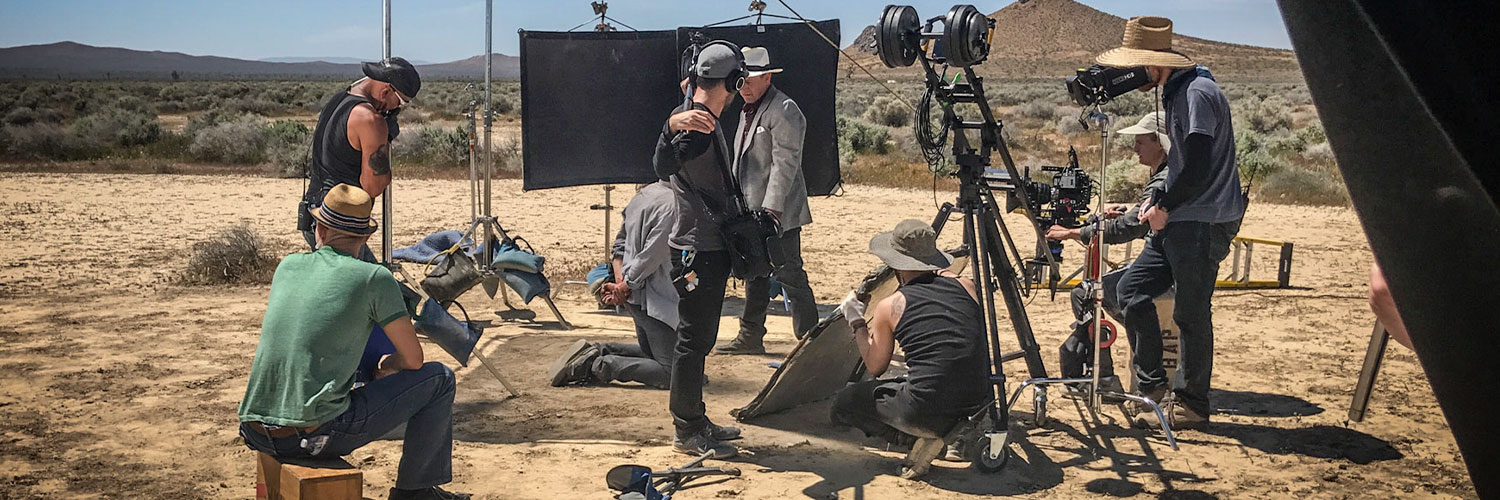
Location Department Certification Course
Movies and television shows are either shot on a set or on location. Shooting on location provides a variety of challenges, including finding viable locations that suit the creative and technical needs of the production, negotiating agreeable terms with the location owner, managing permits and municipal requirements, coordinating shooting events with the city, and managing interactions with the public. At the forefront of these efforts is the locations team.
Lead by the locations manager, the locations team serves as a liaison between the production, the municipality, and the location owners. They are responsible for scouting locations that meet the director’s vision, coordinating permits with the municipality, securing police when needed, negotiating with the location owner, and resolving any problems that arise during production. It’s a challenging yet rewarding career that find and coordinates real works locations to augment the world of the story. It’s also an excellent way to break into the film industry and learn how professional crews function, since locations management touches every department.
In the Location Management Course, the location managers behind Hollywood biggest blockbusters teach you the skills to break into the locations department. This course covers:
- How to break down a script for locations
- How to scout a location
- How to pitch a production to a location owner
- The required contracts and terms
- How to work with the local municipality to secure permits, close streets, and interface with the police
- How to identify the technical requirements of a production, including parking, power requirements, restroom access, and much more
- How to work with the local film commission
- How to diplomatically address neighbor concerns regarding the shoot
- How to work with the public, especially when shooting in public venues
- How to properly manage disruptive people
- The professional code of conduct for cast and crew
This self-guided online course is taught by leading location managers, including:
MIKE FANTASIA
Location Manager
Mike has scouted and managed locations for “Ant-Man and the Wasp,” “Spider-Man: Homecoming,” “Godzilla,” “Indiana Jones and the Crystal Skull,” “3:10 to Yuma,” “Memoirs of a Geisha,” and “The Green Hornet”
Veronique Vowell
Supervising Location Manager
Veronique has found and managed locations for “Grey’s Anatomy,” “How to Get Away With Murder,” “Scandal,” “Cold Case,” “Curb Your Enthusiasm,” “Angels in the Outfield,” and “Encino Man”
Kathy McCurdy
Location Manager
“Star Trek,” “Star Trek: Into Darkness,” “Transformers,” “Mission Impossible: Ghost Protocol,” “Dexter,” “Big Little Lies,” “Six Feet Under”
“Our mission is to promote increased media production in Northeast Ohio using effective strategies for attraction and workforce development. While our interns assist with pre-production work and we often promote local workshops and job opportunities, the training they receive from FilmSkills is by far the most comprehensive. Our students love the convenience of being able to move at their own pace and their ability to study anywhere with an Internet connection. We’re very pleased with the extensive course content and continual platform updates.”
- Greater Cleveland Film Commission


Your logo. Your branding.
Seamlessly integrate our online training platform into your brand, your website, your messaging.
- Customize landing pages
- Add your logo to every page
- Edit site colors to match your website
- Replace site photos with your own
- Edit icon colors
- Map to your URL
- Free SSL certificate
- Custom top menu and page footer
- Replace header fonts
- Design student and instructor home pages
Powerful, Intuitive Training Platform
Whether you’re training 10 or 10,000, our advanced training tools help you manage your student roster, build training courses, and administer certifications with ease
Assign and Manage Training Content
Build instructor-led classes or self-guided online courses for flexible training options
Manage Your Student Roster
Set seat limits for each seminar, auto-enroll students, and track student logins.
Testing and Assessment Tools
Build auto-grading group tests with time limits, grading options, and manage your own questions.
Set fees and Generate Revenue
Integrated credit card processing lets you collect seminar fees, and keep 100% of the revenue
Interactive Projects and Exercises
Create, assign, accept student submissions, and grade student projects and exercises.

“Creating a certification program to supply crew to Kentucky’s Film Incentive only became a possibility because of FilmSkills. They provided the platform and content that would have taken us years to produce. Without FilmSkills, the certification probably never would have launched due to the sheer amount of work and infrastructure required. But their platform and content saved us years of work. The state’s film incentive will be successful because of our partnership with FilmSkills in this process.”
Saran Hogencamp
Director of KY Film Certification

Add your own training content
Augment FilmSkills’ robust training content with your own. Add regionally-specific information, vendor information, and personalized training using our intuitive lesson builder.
- Fully hosted video
- Create stunning illustrated tutorials
- Create quizzes
- Build projects and exercises
- Add downloadable files and web links
- Share lessons among instructors
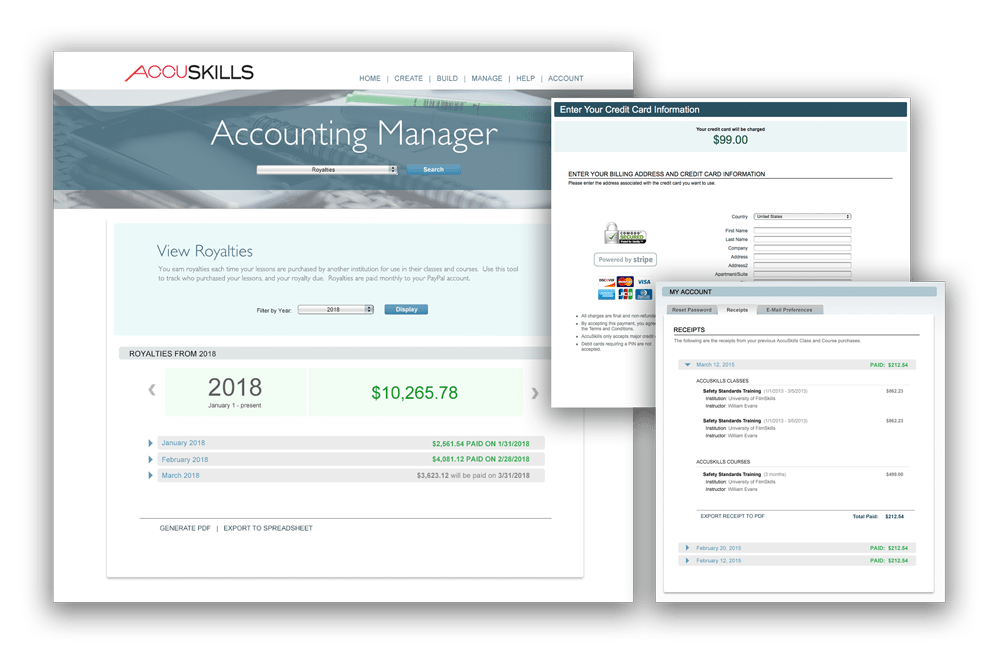
Integrated E-Commerce
Accept Credit Card Payments
Sell your own classes and courses to students and keep 100% of the profits. You have your own credit card account and the revenue flows directly into your bank account - no middle man.
Accounting Manager
Manage your revenue with our robust, integrated accounting tool. Track which classes, courses, and lessons are selling best, and view your numbers at a glance.
Create Stunning
Certification Programs
Certification is a powerful tool to motivate your students to achieve, while adding value to your online courses. Flexible certification programs enable you to create, manage, and and administer your certifications with easy and efficient.

- Attach class performance to certification
- Create a task list
- Allow multiple certification administrators
- Customize certificates with your logo
- Set certification expiration date
- Manage certifications through the Certification Database
- Students can save and print certificates
- Certificates have serial numbers to prevent fraud
The Affordable Solution
All the tools you need to build your own branded academy-
Your own white-labeled teaching platform complete with support for live training, self-guided online courses, certification programs, student management, integrated credit card processing and more. Each 3-month, self-guided, online course is an additional $49/student, which you can mark-up to generate revenue.
Are you ready to make your region more attractive to Hollywood?
Contact us for a no-pressure demo and see how FilmSkills can enhance your training program, increase your crews’ skillset, and maximize revenue.

